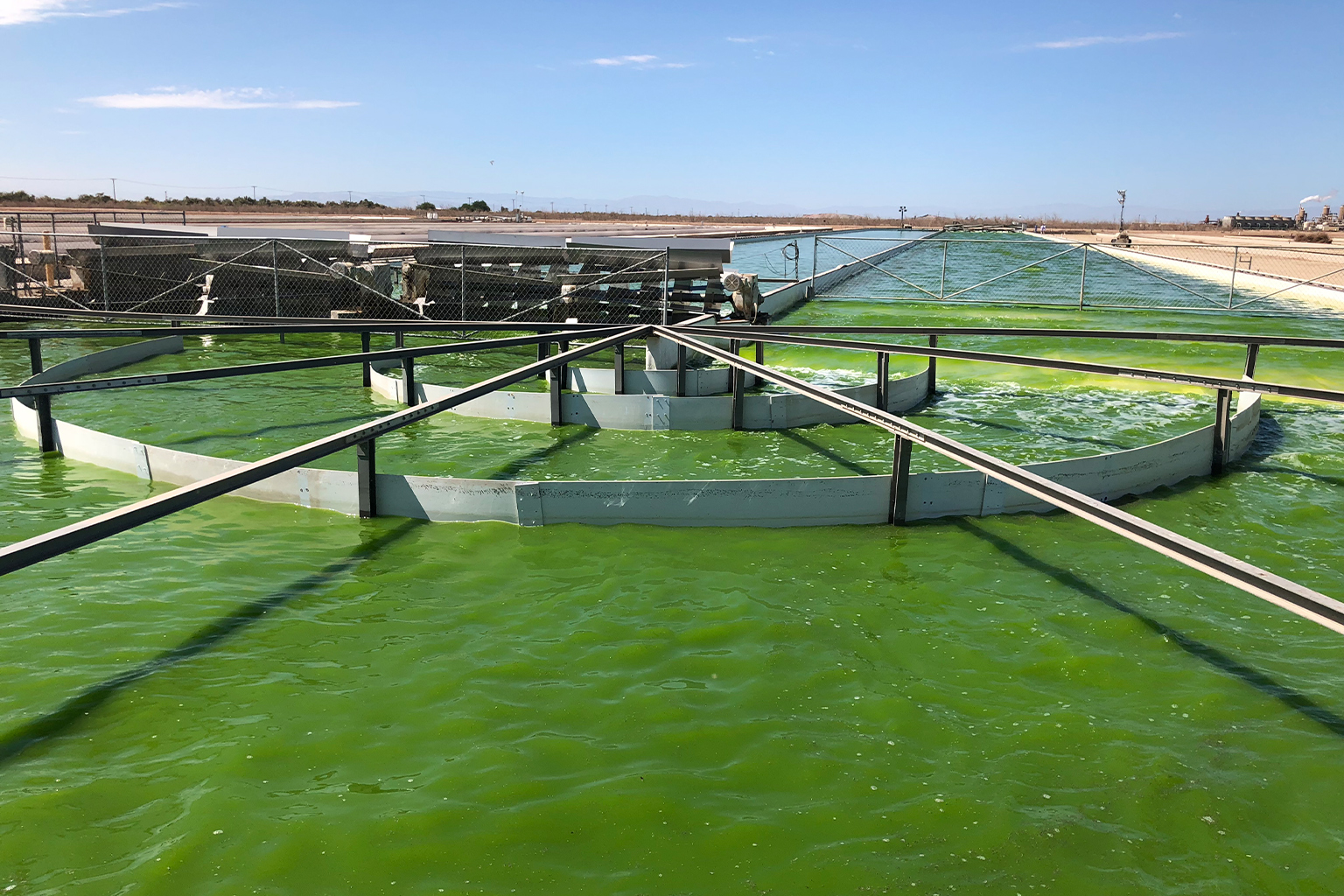- In February, ExxonMobil gave up its decade-long attempt to cultivate algae as a profitable and scalable feedstock for biofuel — a liquid alternative energy source needed to power aviation, ocean-going ships, and long-distance trucking, while also combating climate change.
- That corporate setback was offset by advances elsewhere in the industry: California-based algae biofuel company Viridos, which lost ExxonMobil as its partner, raised $25 million this year as it gained United Airlines, Chevron and Breakthrough Energy Ventures as investors to keep its algae project moving toward commercialization.
- Also, this year, the U.S. Department of Energy Bioenergy Technologies Office (BETO) funded four major algae biofuel and biomass projects to chart scalable production processes and achieve low-carbon intensity efficiency.
- Several of these algae initiatives are now moving from basic R&D into pilot programs, with scaled-up commercial production possibly just a few years away, according to industry experts. Environmentalists are concerned about future land, energy and fertilizer impacts during production, though say it is too early to assess potential commercialization effects.
The algae biofuel industry has seen some ups and downs in 2023, with one major corporate player pulling out of the race to make a viable sustainable product, even as several U.S. Department of Energy programs and private companies made headway in research and development.
There has been enough progress, some experts say, to soon launch scalable algae biofuel pilot projects — offering a possible boon to energy markets now fraught with uncertainties including the ongoing Ukraine-Russia war.
As climate change intensifies, the demand for efficient liquid biofuels, especially to power the transportation sector, has escalated. Algae has long been hailed as a potential liquid fuel feedstock, though making a scalable and profitable product has so far eluded all involved. But that hasn’t stopped nations and companies from pumping money and research into the effort. Today, the U.S., Canada and the Netherlands lead in algae biofuel research.
Viridos on the verge of success?
In February, Viridos, a private California-based algae biofuel company, looked to be in a precarious situation when news broke that ExxonMobil, one of the largest investors in Viridos’s algae technology development, pulled out of their longtime partnership.
“We’ve invested hundreds of millions of dollars over a decade, and seen remarkable results in the science, which has been peer reviewed,” Todd Spitler, the senior adviser of corporate media relations at ExxonMobil, said in an emailed statement to Mongabay. “Algae still has real promise as a renewable source of fuel, but it has not yet reached a level we believe is necessary to achieve the commercial and global scale needed to economically replace existing sources of energy.”
Undeterred, Viridos announced a month after ExxonMobil’s withdrawal that it had raised $25 million via an agreement with Breakthrough Energy Ventures, United Airlines Ventures, and ExxonMobil competitor Chevron, with the goal of developing a sustainable aviation fuel (SAF) and renewable diesel fuel (RD) using Viridos’s innovative processing methods and its genetically modified oil-rich algae.
“SAF and RD made from Viridos algae oil are expected to have a 70% reduced carbon footprint,” according to a press release published on Businesswire.

“I feel we have exactly what we want,” said Viridos CEO Oliver Fetzer of the three new investors, especially noting United’s strong commitment to decarbonizing its air fleet, and Chevron’s commitment as a renewable energy customer.
Thanks to the $25 million in funding, commercialization of Viridos’s algae biofuel is now in “the line of sight,” he said.
“We’ve spent years focusing on making algae into oil. And its oil productivity has increased seven-fold” during a development period over which wild algae was modified to produce more and better oil, Fetzer told Mongabay. He noted that many biorefineries have been manufacturing sustainable energy oils for well over a decade, made from a variety of bio-feedstocks, including vegetables. For algae, the process needed a little more time, Fetzer explained. He estimates Viridos will need two more years to iron out the processing details.
“We know in theory it will work just fine,” he said.
Fetzer credits ExxonMobil’s support for helping Viridos (formerly Synthetic Genomics) survive and thrive. An algae biofuel gold rush and financial frenzy was well underway by 2009, and led to many impressive corporate startups — most of which went bust after being unable to achieve their scalable production deadlines. Today, Viridos is the “only company left standing,” says Fetzer.

U.S. efforts with algae
Daniel Fishman, a physical scientist at the U.S. Department of Energy Bioenergy Technologies Office (BETO), agrees that bright prospects likely lie just ahead for algae biofuel production, as the technology moves out of its R&D phase. BETO is currently helping fund four test programs aimed at becoming scalable projects, including the one being advanced by Viridos. BETO has also granted $2 million to a National Renewable Energy Laboratory project that is extracting lipids from algae biomass to make SAFs.
These initiatives try to keep environmental impacts at a minimum: For example, projects under BETO and with Viridos use seawater, not freshwater, as the medium for growing algae. Likewise, Viridos systems, including the firm’s California Advanced Algal Facility (CAAF) in Calipatria, are located on what Fetzer calls “marginal lands,” which are undeveloped and non-arable, so as not to reduce existing food croplands.
Environmentalists have raised concerns regarding the large-scale commercialization of algae biofuels, including land-use change, and energy and fertilizer consumption during production, but it’s too early to assess such impacts.

Refining the algae biofuel process
The Viridos fuel-making process runs like this: It begins with microalgae — single-celled organisms that float in water. The seawater used is slightly alkaline with a pH a little over 7, according to Fishman. At that pH, there is a balance of carbon in both the air and water. Next, the algae take carbon out of the water to grow by photosynthesis. However, if the water’s chemistry forces more CO2 from the atmosphere into the seawater, the algae grow better and carbon efficiency is increased.
Viridos has created genetically engineered algae strains ideally adapted to these optimal growing conditions, which Fishman calls “a really exciting” development that supercharges the company’s algae cultivation system to greatly enhance algae biomass. The next step is to determine how “you extract the valuable [oil] components from that biomass, and how you convert it to the [fuel] products that you need.”
“Progress continues to be made, whether companies come and go,” says Fishman. “Exciting technologies for [making] algal biomass and [producing] biofuel continue to be developed and there’s new commercialization happening in the algae space.”
Despite years of slow progress, painstaking science, and turbulent market fluctuations, commercial algae biofuel is on the brink of arrival, agrees Fetzer. He cites Amara’s Law to defend algae biofuel’s volatile early growth period: “We tend to overestimate the effect of a [new] technology in the short run, and underestimate the effect in the long run.” Now, he concludes, “15 years of pain is behind us.” And today, the achievable goal is to engineer algae that will perform to the best of its capabilities.


“How do you engineer an incredibly interesting organism to be more productive?” Fetzer asks, then answers his own question: “It’s not trivial.”
If the entrepreneurs and government experts are right, the world could be on the cusp of an algae biofuel breakthrough.
Banner image: Viridos, United Airlines Ventures, Chevron and Breakthrough Energy Ventures are hoping to produce a commercially viable jet fuel that could decarbonize United’s air fleet. Image by Honeywell via Wikimedia Commons (CC BY-SA 3.0).
FEEDBACK: Use this form to send a message to the author of this post. If you want to post a public comment, you can do that at the bottom of the page.
Related reading: Playing the long game: ExxonMobil gambles on algae biofuel
This story first appeared on Mongabay
South Africa Today – Environment
This article is licensed under a Creative Commons Attribution-NoDerivatives 4.0 International License.
You may republish this article, so long as you credit the authors and Mongabay, and do not change the text. Please include a link back to the original article.












